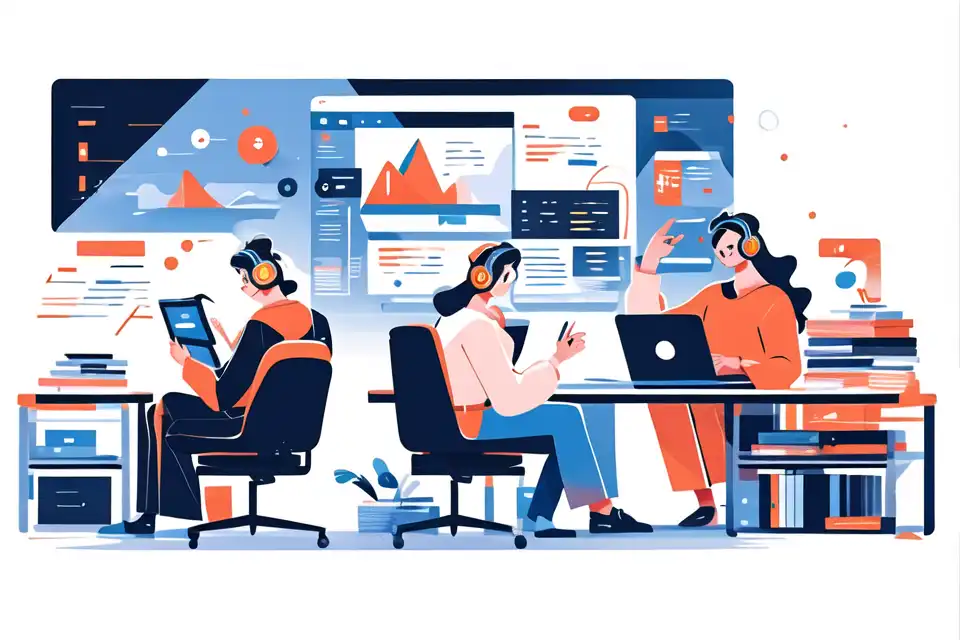Real Time Agenda
Explore what real time agenda means for your meetings. Learn more about its definitions, best practices, and real-world examples to enhance your meeting effectiveness. Dive into the importance, challenges, and solutions for each term.
Try Lark for Free
In today's fast-paced professional environment, the need for efficient communication and streamlined meeting management is paramount. One of the key tools that have emerged to address these needs is the concept of real-time agendas. Integral to successful meeting facilitation and decision-making processes, understanding the nuances of real-time agendas can significantly enhance the effectiveness of meetings and overall professional productivity.
Get Lark for meeting minutes today.
Understanding real-time agenda in the context of meetings
Introduction
In the context of contemporary professional dynamics, the term real-time agenda holds immense significance. It refers to the dynamic and flexible structuring of meeting agendas that can be updated and modified in real-time during discussions, ensuring that the meeting remains focused and relevant to the evolving needs of the participants.
Definition of Real-Time Agenda
A comprehensive definition of a real-time agenda encompasses its role as a living document that adapts to the flow of the meeting. It is a tool used to guide discussions, capture action items, and track progress in a collaborative and agile manner. Related terms include "live agendas" and "dynamic meeting frameworks," all of which emphasize the responsive and adaptive nature of this concept.
Importance of Real-Time Agenda in Meetings
Real-time agendas play a crucial role in optimizing meeting effectiveness. By allowing for adjustments and real-time updates, they add a layer of flexibility that is essential in agile work environments. This adaptability ensures that the meeting stays focused, allowing for substantial progress on agenda items without being overly rigid.
Provide Examples of How Real-Time Agenda Applies in Real-World Meeting Scenarios
Example 1: Agile Project Management Meeting
A project management meeting involving cross-functional teams working on time-sensitive projects requires dynamic, real-time agendas. As priorities and requirements shift, the ability to update the agenda and pivot discussions in response to emerging needs is essential for keeping the team aligned and on track.
Example 2: Executive Strategy Session
In high-level strategy discussions, real-time agendas allow for seamless integration of new insights and data points. This ensures that the meeting remains strategically aligned with the latest market trends and internal developments, promoting comprehensive decision-making.
Example 3: Innovation Brainstorming Session
During brainstorming sessions focused on innovation and creative problem-solving, real-time agendas enable the facilitator to modify the discussion flow based on the energy and momentum of the participants. This adaptability encourages dynamic idea generation and fosters a collaborative environment.
Example 4: Crisis Management Meeting
In times of crisis, such as unforeseen market shifts or operational challenges, real-time agendas provide a structured yet adaptive framework for addressing urgent issues. The capacity to swiftly adjust the agenda enables the team to respond effectively to the evolving situation.
Example 5: Client-Facing Consultation
Client consultations often require flexible agendas to accommodate unforeseen client needs and questions. Real-time agendas allow for on-the-fly adjustments, enabling the team to address client concerns with agility, ultimately fostering stronger client relationships.
Best Practices of Real-Time Agenda
Effective utilization of real-time agendas hinges on several best practices:
- Collaborative Preparation: Encouraging all meeting participants to contribute to the agenda in real-time, promoting inclusivity and alignment.
- Clear Documentation: Ensuring that changes to the agenda are documented in real-time, providing transparency and accountability.
- Focus on Objectives: Aligning discussions with the core objectives of the meeting, adapting the agenda as needed to maintain focus.
- Post-Meeting Updates: Documenting final action items and decisions in real-time, ensuring that the meeting's outcomes are captured accurately.
Challenges and Solutions
Challenges:
- Resistance to Real-Time Updates: Some team members may struggle with the dynamic nature of real-time agendas, preferring traditional, static agendas.
- Information Overload: In dynamic discussions, there is a risk of overwhelming participants with constant agenda updates and modifications.
Solutions:
- Cultural Shift: Educating team members about the benefits of real-time agendas and gradually introducing them to the concept can mitigate resistance.
- Structured Updates: Implementing a system for signaling essential agenda changes and distinguishing between minor updates and critical modifications can help manage information overload.
Conclusion
In conclusion, the real-time agenda represents a paradigm shift in meeting management, offering a dynamic and responsive approach to agenda setting and facilitation. By leveraging the flexibility and adaptability inherent in real-time agendas, organizations can transform meetings into highly productive and outcome-oriented gatherings, driving overall professional effectiveness.
Learn more about Lark Minutes
Get Lark for meeting minutes today.
